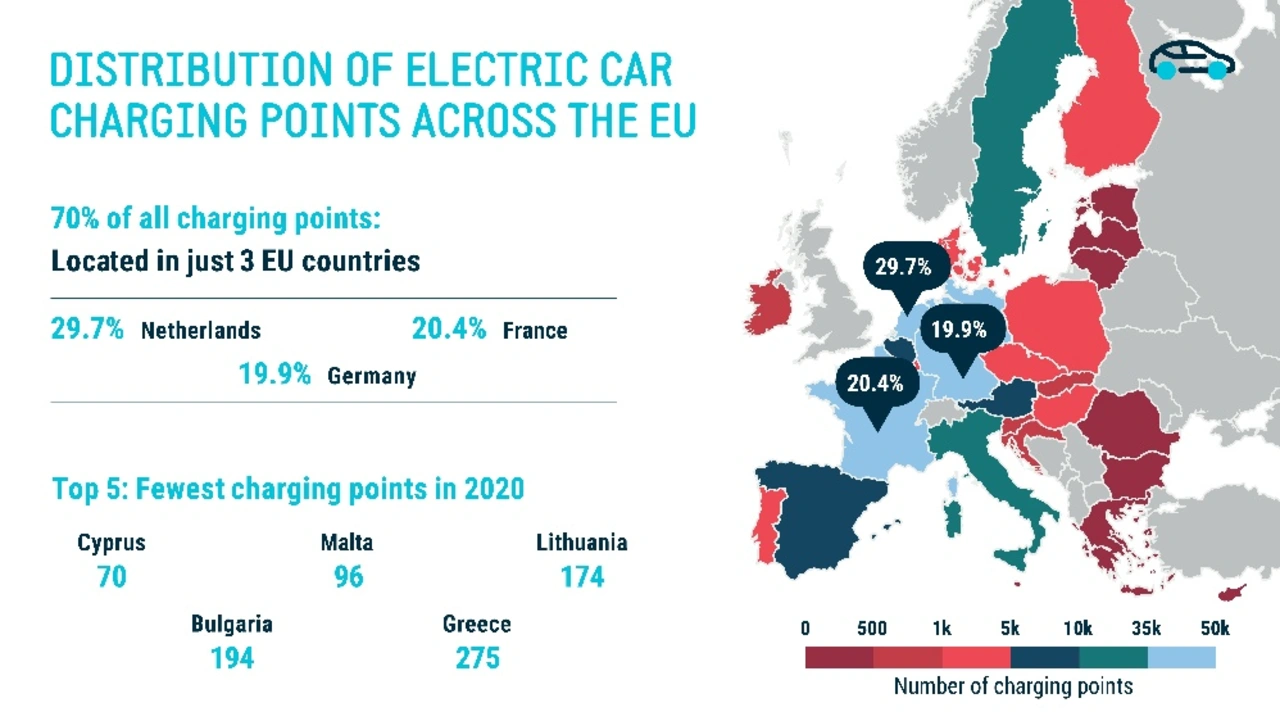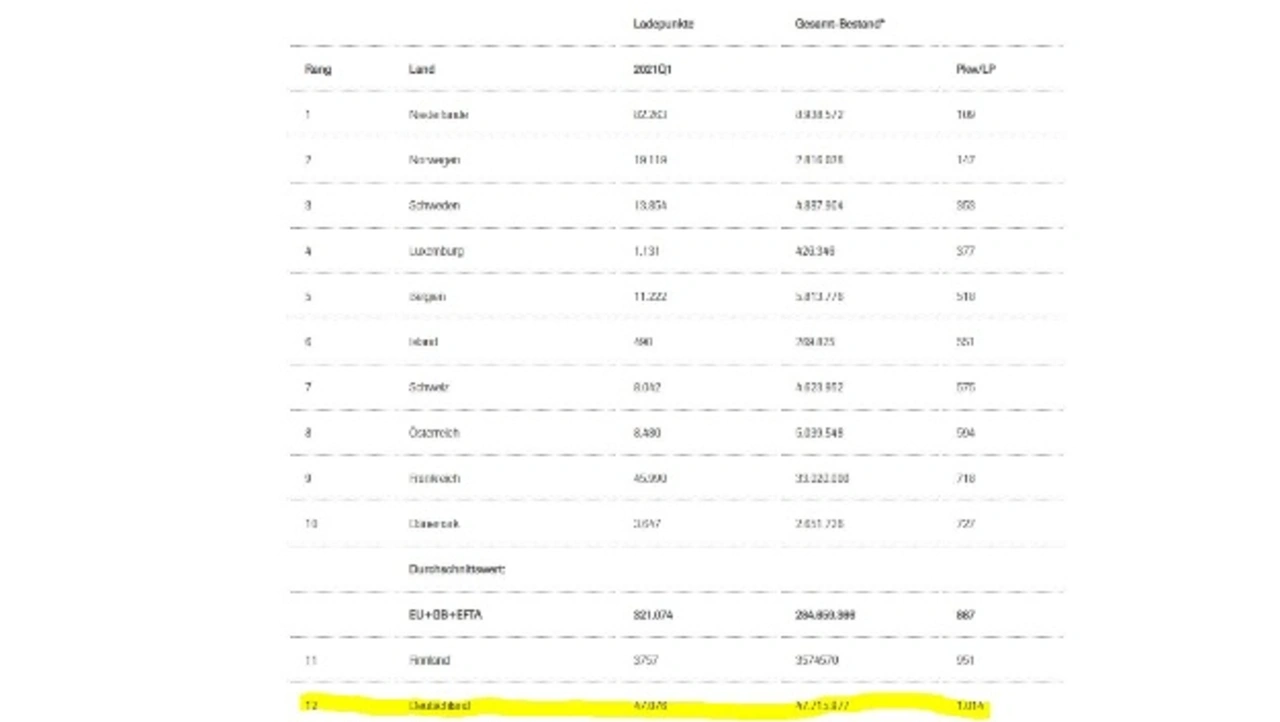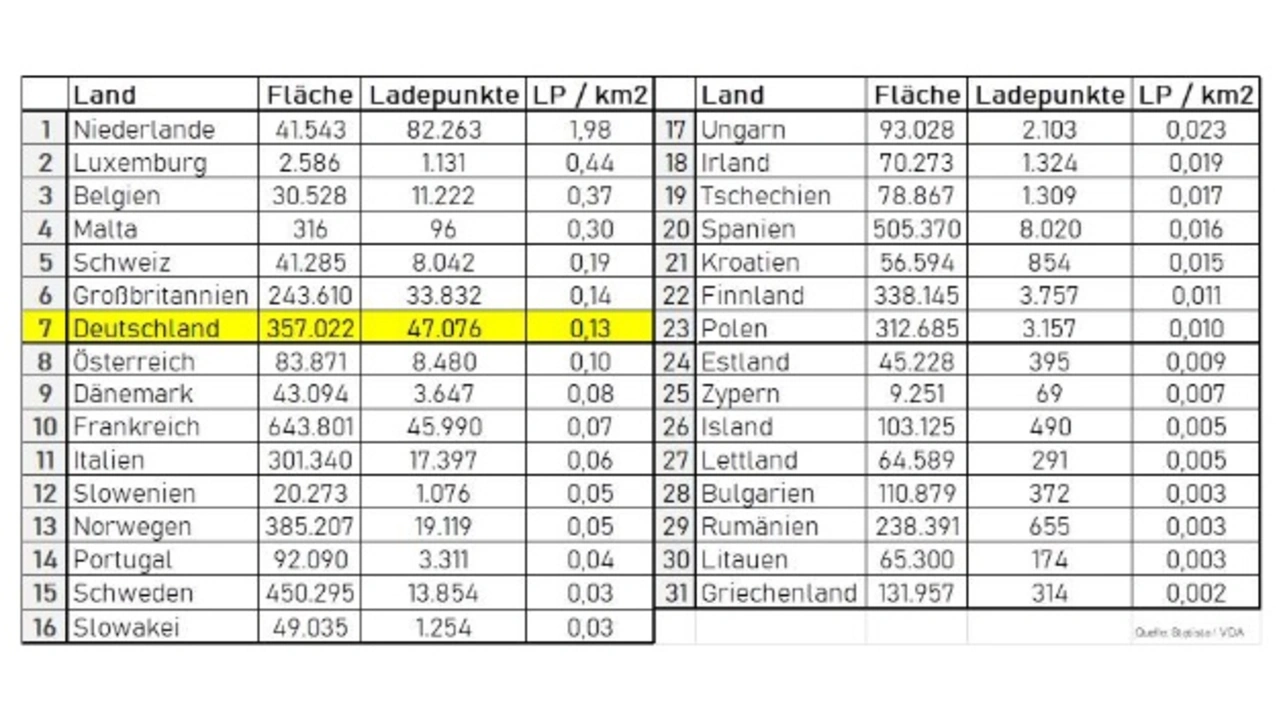Electromobility in the EU
Where does Germany Stand with Charging Stations?
Goodbye range anxiety? In 2020, Germany will be in third place in the EU with 44,538 charging points. But is that enough? For drivers, the next charging point within a radius is important when the battery is empty. Elektronik automotive has calculated where Germany stands.
The much-vaunted fear of range limitations should no longer be an issue in Europe. The number of newly registered electric cars is increasing from quarter to quarter, charging stations can now be found in front of many supermarkets, and wallboxes have become lifestyle consumer items. So what is left of the fear of not getting where you want to go?
The Association of European Automobile Manufacturers (ACEA) and the German Association of the Automotive Industry (VDA) have taken a look at the pure figures and come to very different conclusions. But what counts for drivers?
ACEA first notes a major imbalance; 70 percent of all European charging points are located on just 23 percent of the surface area. The leading triumvirate is the Netherlands in first place with 66,665 charging points, followed by France with 45,571 and Germany with 44,538 charging points (as of 2020). Germany thus has around 20 percent of all European charging points. And after that, nothing follows for a long time.

Weaker EU states seem to be left behind
Italy is far behind in fourth place with 13,073 charging points, which corresponds to a share of only 5.8 percent in Europe. Bringing up the rear in the 31-place list are Cyprus (70), Malta (96) and Lithuania (174) - even Romania, a country six times the size of the Netherlands, has only 493 charging points, a 0.2 percent small share. This disproportion illustrates how asymmetrical the distribution of chargers is.
The bifurcated development of infrastructure is developing between richer EU member states in Western Europe and countries with lower gross domestic product (GDP) in Eastern, Central and Southern Europe. Countries with significant land mass but lower GDP, such as Poland (0.8% of EU chargers) and Spain (3.3%), appear to be falling behind, warns ACEA, calling for immediate and balancing investment.

How many charging stations are there per car?
A different perspective on the same figures, but already as of Q1 / 2021, has taken the VDA, whose evaluation puts the number of charging points in relation to the registered passenger cars. »The more public charging points there are, the more attractive it is for consumers to switch to electric drive,« the association informs. Even with this approach, the Niderland is at the top of the charging infrastructure ladder, where there is one charging point for every 109 cars.
In 2nd and 3rd place are Norway and Sweden, even small countries like Luxembourg and Iceland land in the top 6 with 377 and 551 cars per charging point respectively. The European average including the UK is 887 cars per charging point. Hildegard Müller, president of the VDA, says: »A Europe-wide charging infrastructure is currently not in place, and the nationwide expansion is unfortunately a long way off.« Germany ranks 12th with 1014 cars per charging point, well below the European average.
»If the EU Commission is considering only allowing new cars with electric drives in the future, it must ensure a nationwide charging network everywhere in Europe. To this end, the EU Commission must now set binding expansion targets for all states. This includes charging points at the place of residence, at the workplace, in retail outlets and on public roads,« Müller continued.
What do drivers care about?
Drivers of electric cars want to reach their destination as comfortably and quickly as possible, just as they do with conventionally powered vehicles. The alternative drive should make as little difference as possible in everyday life and also when traveling, or understandably not cause any additional expense - otherwise an electric car would not be a real alternative.
When the battery shows only 20 kilometers left and aggressively urges the driver of an electric car to charge soon, it simply doesn't matter where Germany ranks in the EU or how high the density of charging stations per passenger car is. What counts at this moment is that a charging point can be reached as quickly as possible in the immediate vicinity and that the battery is back to 100 percent. The best indicator of this is the number of charging points per square kilometer.

In this statistic, too, the Netherlands leads far and away from Luxembourg and Belgium. With almost 2 charging points per square kilometer, electric car drivers in the orange neighboring country have more than 15 times as many charging points as in Germany. With a number of 0.13 charging points per square kilometer, the traditional automotive country ranks seventh in the European comparison.
The calls for a more aggressive expansion of the charging infrastructure structure are thus more than justified, and not only in the weaker EU countries. If Germany alone wants to reach the current level of the Netherlands, more than 659,000 public charging stations will be needed to put an end to range anxiety.







